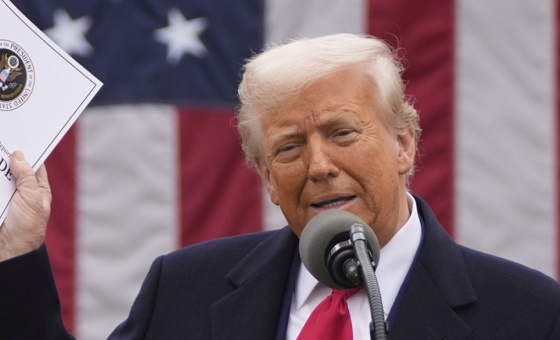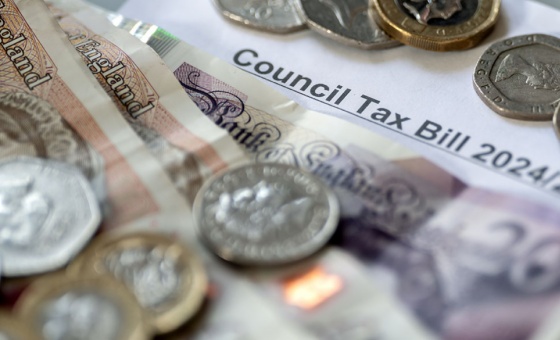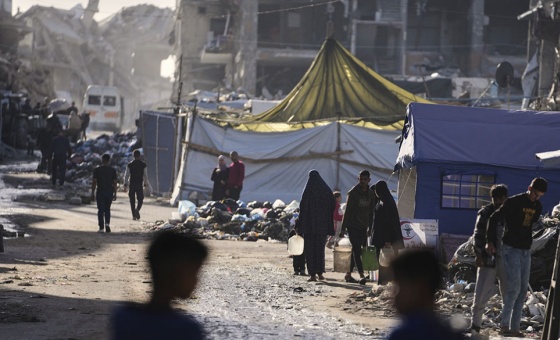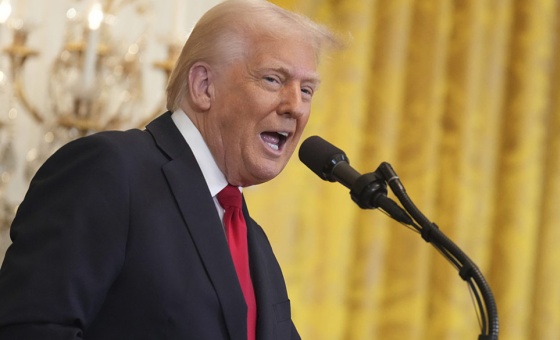This is the last article you can read this month
You can read more article this month
You can read more articles this month
Sorry your limit is up for this month
Reset on:
Please help support the Morning Star by subscribing here
“FAIRY gold” in kids’ fables is magic money — a fortune that soon crumbles to be revealed as leaves, dust or worthless rubbish. More colloquially, it is precarious or illusory wealth that may vanish as swiftly as it is acquired. That was certainly the case with some speculators following the global banking crisis of 2007–2008.
The real victims, of course, were ordinary working-class families who lost their savings, their homes, their jobs and, sometimes, their lives as a consequence.
The crisis wasn’t some kind of aberration. Marx pointed out that while crises are endemic to capitalism, those involving what he called “fictitious capital,” a subset of financial capital, were central.
Financial capital to most people means money, or rather, money in the bank above and beyond what is necessary for survival and which potentially can be invested to make more money. Most people don’t have very much of it, and what they do have won’t “earn” them very much as interest.
But some people have lots, and corporations and banks have even more. Sometimes they invest it in “productive” capital: raw materials, energy, supplies and services and, above all, machinery (the “means of production”) and in the labour power of workers they employ.
Marx called this “real capital” alongside “money capital” — the actual funds used. This enables them to produce a commodity whose sale realises a profit — more financial capital — which may or may not be reinvested.
“Fictitious capital” is different. Capitalism depends on credit and debt. It always has done. If you take out a loan — buy something with your credit card for example (two centuries ago it might have been a loan from a moneylender to buy seeds or tools), you have to work to pay it back — with interest. A factory owner who takes a loan to expand is “banking” on paying it back from the exploitation of future employees.
What is new today is financialisation’s global hold — and the fact that an ever increasing proportion of financial capital is, to use Marx’s term, “fictitious.”
“Fictitious capital” today is independent of the actual production of commodities (goods or services). At its heart it consists in essence of financial “claims” on goods and services that have not yet been produced (and which may never be produced), the promise of future earnings based on the surplus value created by workers who have yet to be employed.
It includes stocks, shares and other securities, which, said Marx, are “merely a title of ownership to a corresponding portion of the surplus-value to be realised by it” — essentially conferring on their owner a share in future profits, a share of the value appropriated from the labour of those who have produced it.
Today fictitious capital involves the invention of increasingly complex “paper” (actually electronic) financial products such as derivatives, securitised assets and foreign-currency mortgages, all undreamt of in Marx’s day and increasingly distanced from the production of physical commodities.
Financial technology or “fintech” — the automated enhancement of financial services — is a major focus of innovation and global investment, particularly in post-Brexit Britain, where speculative investment has doubled in the last year to some £37.5 billion.
Examples range from crowdfunding platforms (companies such as Kickstarter and GoFundMe) through intelligent investment and stock-trading apps to new blockchain and cryptocurrencies.
Marx not only coined the term “fictitious capital” but spent quite a bit of effort in analysing it. A chapter entitled Credit, Fictitious Capital and Crisis in volume III of Capital demonstrates how capitalism increasingly becomes dependent upon credit and debt as key elements of fictitious capital.
Today, credit and debt — from your own, personal, credit-card balance to the national debt — are central to capitalism. At an individual level, collection agencies chase debtors to pay them on a creditor’s behalf.
But credit itself is a commodity: it is bought and sold. And if enough people default, there’s a problem.
Alongside debt and often intimately linked with it, particularly since the crash of 2008, an increasingly important component of fictitious capital is “dead capital” typified by empty properties and the “banking” of development land, with unrealised use value, so producing no rent but appreciating in exchange value — and producing a notional “profit” for its owners — with every day that passes.
The profit is there, OK, but the actual, physical capital and its ability to yield useful products has not changed one iota.
The “fictitious” part of fictitious capital generally only becomes publicly visible at a time of crisis, most particularly during the collapse of a company or a bank, when the share capital, or the “money” deposited (for which the investor has a receipt) becomes valueless.
Where the current crisis differs from earlier ones is in the role of the state intervening to save the economic system. Without this, the consensus — of both right and left — was that it would have collapsed in its entirety. And, of course, the “prosperity” that has returned is restricted to a relatively small number of individuals.
State intervention to save the economy is nothing new. Engels points out (in a footnote to volume III of Capital) that the Bank of England was able “to issue any quantity of bank-notes regardless of the gold reserve backing in its possession; thus, to create an arbitrary quantity of fictitious paper money-capital and to use it for the purpose of making loans to banks, exchange brokers and through them to commerce.”
From the 1930s the “gold standard” was abandoned (initially in the US in order to end the Great Depression) to be replaced by “fiat money” — money issued by governments but not linked to any specific asset, whose “value” is essentially a matter of faith that it can be used to purchase something.
“Fractional reserve banking” — the normal practice whereby the reserves held by a bank are merely a fraction of its liabilities to depositors (which allows the money supply to grow beyond the base money created by the central bank) means that the state has to act as lender of last resort to those commercial banks.
As a consequence in the 2007-8 crisis the Bank of England created new money, electronically, out of nowhere, a process called “quantitative easing.”
Some of it — about £45bn — was used to “buy” shares in RBS, now valued at less than half of what the taxpayer paid for them. And much higher sums were supposedly “injected” into the economy — not through direct investment in production, transport, education or health services but rather to buy back bonds from the commercial banks, who were then free to use the money as they wished.
QE continues to grow — from £200bn in 2009, to about £435bn in 2018. The sums were even greater last year, in order to counter the effects of Brexit — about a quarter of Britain’s GDP.
And following the Covid-19 pandemic they are likely to grow even further, as money, injected supposedly to support production, employment and essential services, ends up propping up a failing financial system, much of it in tax havens overseas.
“Fictitious capital” sustains the capitalist system at the cost of vicious cuts in education, health and welfare services, of escalating levels of personal as well as institutional (including national and local-government) debt, increased exploitation for those in work and growing inequality. The burden, as ever, falls on ordinary people.
Previous answers (this is number 63) can be found on https://tinyurl.com/FullMarx.
The Marx Memorial Library and Workers’ School’s next online course, Trade Unions, Class and Power starts on Monday May 18. Details on https://tinyurl.com/MMLOnlineLearning.










